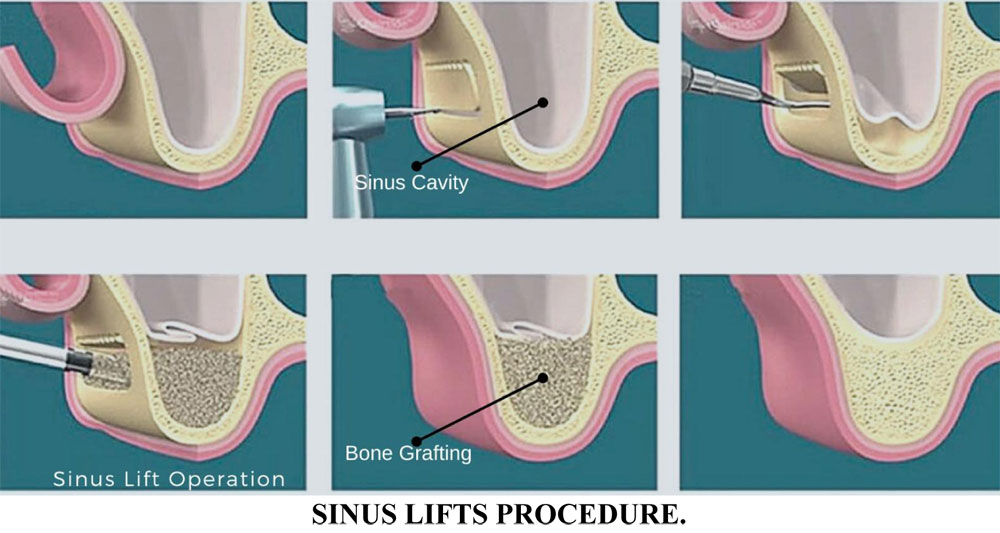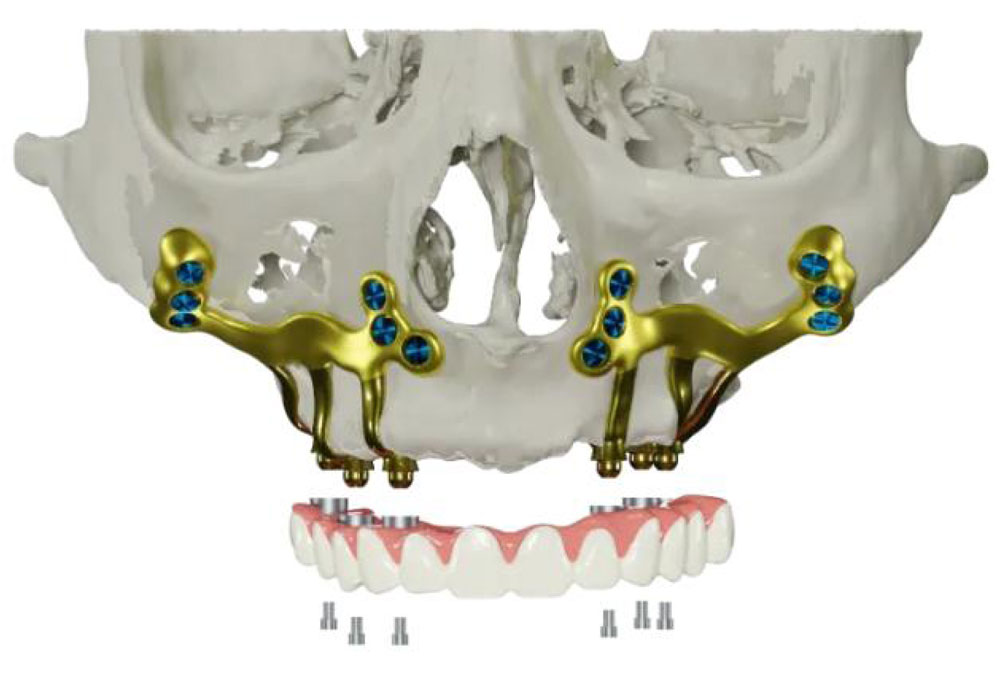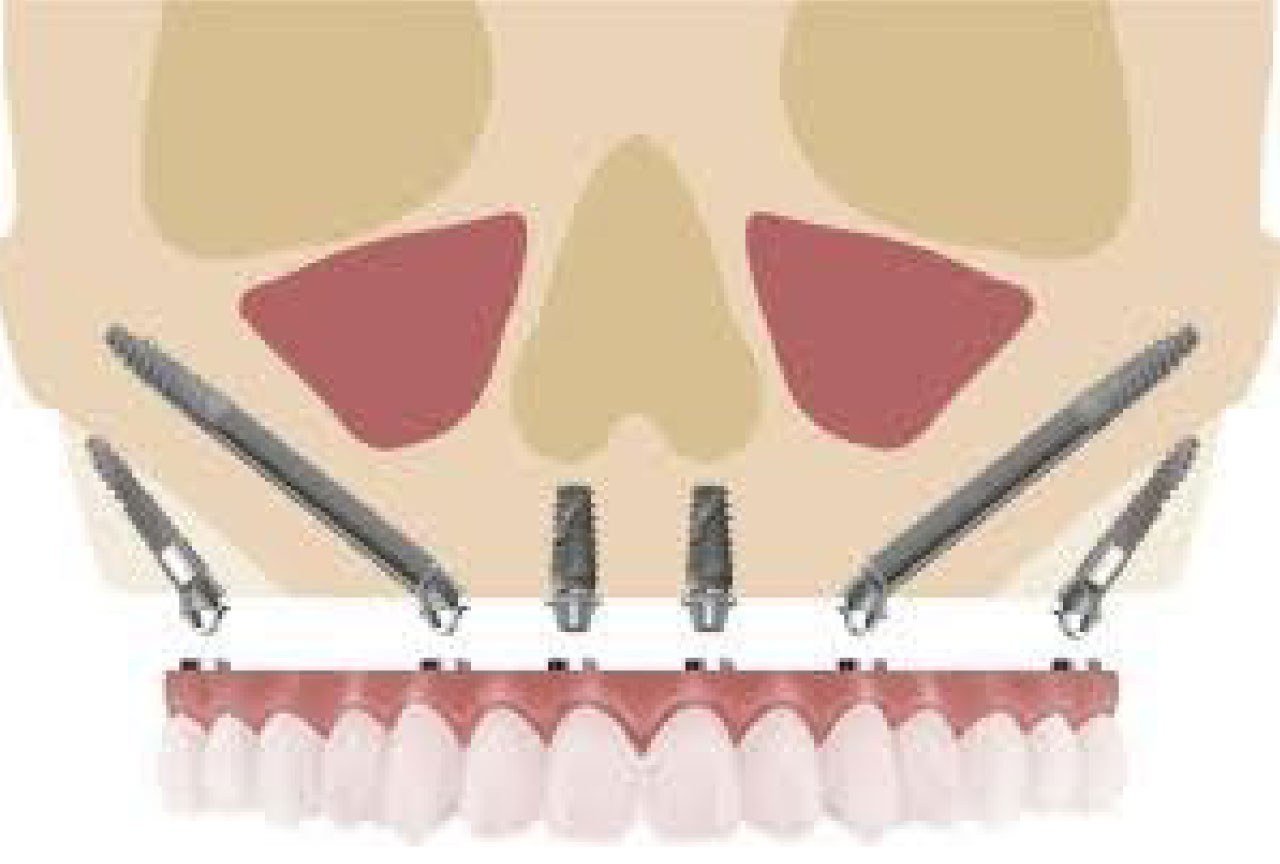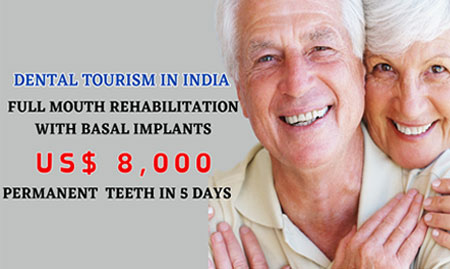
Dr. K Sharada Reddy, Author
Senior Dentist & Full Mouth Rehabilitation Expert
The Modern Graft less Approach to Upper Jaw Implant Solutions
When patients require dental implants in the upper jaw especially in the posterior (back) region implant placement becomes particularly challenging. This is primarily due to the presence of the maxillary sinuses on either side, which reduce the available bone height. Additionally, natural bone loss over time and sinus expansion, especially in areas with long-standing missing teeth, further compromise the bone volume.
Traditionally, this problem is managed with a sinus lift a procedure where the sinus membrane is elevated and bone graft material is placed to create sufficient bone height for implant placement. Sinus lift procedures are unpredictable and are associated with several sinus lifts drawbacks: they significantly prolong treatment (often by several months), increase overall treatment costs, and carry the risk of complications such as sinus membrane perforation or postoperative sinus infections.

Now, let’s explore, sinus lift alternatives the modern solutions that help avoid sinus lifts and their associated benefits and drawbacks
1. Mini Dental Implants:
Mini dental implants are small-diameter implants (typically <3mm) used in cases with minimal bone. They are minimally invasive, often placed without flaps, and offer immediate stabilization of dentures, making them attractive to medically compromised or elderly patients.
However, mini implants for missing teeth have major limitations:
- Are mini dental implants safe ?
- They lack mechanical strength for full-arch restorations.
- They are often one-piece and cement-retained, making prosthetic retrieval or adjustments difficult.
- They are not suitable for patients with moderate to heavy bite forces, and their longterm success rate is lower than conventional implants.
- Thus, mini implants may be considered a short-term or transitional solution, not ideal for long-term full-arch implant rehabilitation.
1. Patient-Specific Implants (PSI): Customized, Yet Controversial
PSI dental implants are custom dental implants, designed from the patient’s CT scan, fabricated via 3D printing to match the unique jaw anatomy, they are supposed to be custom dental implants for severe bone resorption as an alternative to Zygomatic implants. They can be fixed even in extremely resorbed jaws without sinus lift procedure or bone graft before implants, offering a tailored fit and immediate loading.

Drawbacks include :
- High cost and complex planning
- Inflexibility during surgery
- Cement retention, which hinders hygiene and retrieval
- And most importantly, lack of FDA approval, raising concerns for long-term safety and international acceptance
3. Basal Implants: Graftless but Non-Integrating
Basal implants anchor into the cortical bone dense, basal bone that resists resorption. These are widely promoted for immediate loading and as sinus lift free dental implants.
However, their significant limitations are:
No true OsseoIntegration
Cement-retained prosthetics, often leading to peri-implantitis
Not FDA-approved
And minimal scope for long-term maintenance or prosthetic revision These issues make basal implants less suitable for premium, retrievable, and longlasting results.
Even though there are many sinus lift alternatives available today, each comes with its own set of limitations and concerns. Let us now explore the safest and best alternative to Sinus lift one that is noninvasive, FDA-approved, and supports immediate loading dental implants, where permanent teeth can be fixed in less than a week.
The Safest FDA-Approved, Sinus lift alternative in India : Tilted Implants with CPBCCI Protocol
Tilted implants, often used in All-on-4 dental implants or All-on-6 dental implants, are another way to avoid the sinus region. By placing implants at an angle and using multi-unit abutments to correct angulation, these implants engage native bone and allow for full-arch fixed teeth without grafting.
When placed using the CPBCCI (Crestal Polished cortical conventional implants) protocol, tilted implants become the gold standard in graft less implantology. Instead of sinus lift procedure or placing short dental implants and compromising on the prognosis of the treatment, longer implants are angled (30–45°) to avoid the sinus
Floor and engage dense anterior and pterygoid cortical bone. This approach maximizes native bone use, increases the implant : bone contact ratio aiding in better OsseoIntegration and immediate primary stability.
The CPBCCI protocol ensures that tilted implants engage at least two cortical plates and are bio mechanically positioned to distribute occlusal loads optimally. This results in high survival rates, even in compromised bone situations, without requiring sinus grafts.
One of the most reliable tool in the tilted implant technique using CPBCCI Protocol is the Pterygoid implant, considered essential for any upper full-arch dental implant restoration or when replacing teeth in the posterior upper jaw. These implants are anchored in the dense pterygoid bone behind the sinus, completely bypassing the sinus cavity and providing excellent support without the need for grafting. Pterygoid dental implants are especially useful in full upper jaw dental implants cases and allow for immediate function implants, enabling patients to receive fixed teeth in just 5 days.
In Absolute No-Bone Cases: Zygomatic Implants Are the Game- Changer
For patients with extremely resorbed upper jaws, where there is no bone even anterior to the sinus, Zygomatic implants commonly known as no bone dental implants serve as a powerful alternative. These long implants are anchored into the cheekbone (zygoma), offering strong and stable support for full-arch restorations without requiring any dental bone grafting or sinus lift surgery.

Despite sounding complex, Zygomatic implants in India are safe, minimally invasive, and done under local anesthesia. They are placed through the maxillary sinus (not into it), avoiding sinus lift and grafting. Patients can walk out with fixed teeth in 72 hours, making them ideal for international patients or those seeking “Permanent Teeth in 5 Days” solutions.
To make tilted implants prosthetically viable, multi-unit abutments are used. These components straighten the implant at the gum level, enabling screw-retained teeth, which are hygienic, and retrievable. Multi-unit abutments also help in achieving a passive fit, equal stress distribution, and simplified prosthetic workflows.
Comparison of Sinus Lift vs. Modern Alternatives for Upper Jaw Implants
| Parameter | Sinus Lift with Grafting | Mini Dental Implants | Basal Implants | Tilted Implants (CPBCCI Protocol) |
|---|---|---|---|---|
| Purpose | To create bone height for implant placement | Used in cases with minimal bone | Engage basal bone to avoid grafting | Bypass sinus & engage native cortical bone |
| Invasiveness | Surgical, invasive | Minimally invasive | Flapless or minimal incision | Minimally invasive, flapless in most cases |
| Need for Grafting | Yes, required | Not required | Not required | Not required |
| Time to Load Teeth | 6–9 months (after healing) | Immediate or after 1–2 weeks | Immediate | Immediate (within 3–5 days) |
| FDA Approval | Yes | Yes (some types) | No | Yes (Conventional implants used in CPBCCI) |
| Long-Term Success | Unpredictable | Lower | Questionable due to lack of osseointegration | Very High with proper prosthetic planning |
| Prosthesis Type | Conventional screw/cement-retained | One-piece, often cemented | Always cement-retained | Screw-retained with multi-unit abutments |
| Maintenance & Hygiene | Moderate to High (after healing) | Poor – difficult to clean | Poor – high risk of peri-implantitis | Excellent – screw-retained and retrievable |
| Prosthetic Retrievability | Possible | Difficult | Difficult | Easy with multi-unit abutments |
| Use in Full-Arch Rehabilitation | Possible but delayed & costly | Not recommended | Risky, not preferred for full-arch | Ideal for immediate full-arch implants |
| Risk of Complications | Sinus membrane tear | Implant failure, bending, loosening | Peri-implantitis, failure due to lack of integration | Minimal with correct technique & angulation |
| Planning & Execution | Requires graft planning and healing time | Quick but limited application | Immediate, but guarded prognosis | Advanced but predictable with CPBCCI and digital planning |
| Suitability in No-Bone Cases | Not suitable without graft | Not suitable | Possible but risky | Possible with pterygoid or zygomatic implants |
| Cost-Effectiveness | Expensive due to graft and time | Cheap initially, but poor longevity | Lower upfront, but poor long-term returns | Cost-effective with lasting results |
Conclusion
While sinus lift surgery was once considered the only solution for upper jaw bone deficiency, advanced alternatives like Pterygoid implants, Zygomatic implants in India, placed at an angle using CPBCCI protocol now offer safer, faster, and more efficient options for restoring missing teeth. At LBR Dental & Implant Center, we specialize in these sinus lift alternatives and help patients regain their smiles with full-mouth implants, permanent teeth in 5 days, and graftless, immediate-loading techniques tailored to individual needs.
Frequently Asked Questions (FAQs)
A sinus lift is a grafting procedure to increase bone height in the upper jaw for implant placement. It’s required when there is insufficient bone due to sinus expansion or bone loss.
Sinus lifts are invasive, costly, and time-consuming. Healing may take 6–9 months, delaying the treatment time and complications like sinus membrane perforation or graft failure can occur.
Mini dental implants are less invasive and useful for temporary or denture stabilization. However, they lack strength, are not suitable for full-arch cases, and have limited long-term success.
Basal implants do not OsseoIntegrate posing problems in the long run, are cement-retained (not screwable), and lack FDA approval, making them less ideal for permanent solutions.
Tilted implants are angled to engage available bone and avoid sinus cavities. With CPBCCI protocol, they provide maximum cortical engagement and long-term stability, enabling immediate functional teeth.
Multi-unit abutments convert tilted implant angles into a straight prosthetic platform, allowing screw-retained, retrievable, and hygienic full-arch bridges.
No. Zygomatic implants are minimally invasive, performed under local anesthesia, and ideal for cases with no upper jaw bone. They allow immediate function and are safe when done by experienced clinicians.
The best FDA-approved, graftless alternative is tilted implants placed with CPBCCI protocol, offering strong anchorage, immediate loading, and long-term success.
Yes, advanced options like pterygoid dental implants and Zygomatic implants in India offer successful dental implant placement without sinus lift surgery.
Absolutely. Pterygoid implants are placed in strong cortical bone and have excellent success rates, especially for posterior maxillary teeth replacement. These mplants aid in immediate functional teeth
zygomatic implants are are also called as no bone implants and these are indicated in Patients with severely resorbed upper jaw bone who do not want to undergo invasive sinus lifts or dental bone grafts are looking for permanent teeth in 5 days .
Yes. With immediate loading protocols, patients can receive fixed teeth in 3 to 7 days without waiting months for graft healing.
Though individual cases vary, graftless solutions often prove more cost-effective in the long run, as they reduce the number of surgeries and treatment duration. Can implants be done without a sinus lift? Yes! With advanced options like pterygoid implants, tilted implants with CPBCCI protocol, and zygomatic implants, sinus lift surgery is no longer a necessity.
Tilted implants with CPBCCI protocol are the safest, most predictable, FDA approved, and graftless option that supports immediate loading—fixed teeth in 3–5 days.
Yes, because there's no need for bone grafting or sinus healing time. With immediate loading implants, recovery is quicker and patients receive fixed teeth within a week.
No. Despite misconceptions, they are performed under local anesthesia, are minimally invasive, and have a high success rate when done by experienced surgeons.
Absolutely. Graftless options reduce multiple surgical stages and healing time, often making them more economical in the long run.




